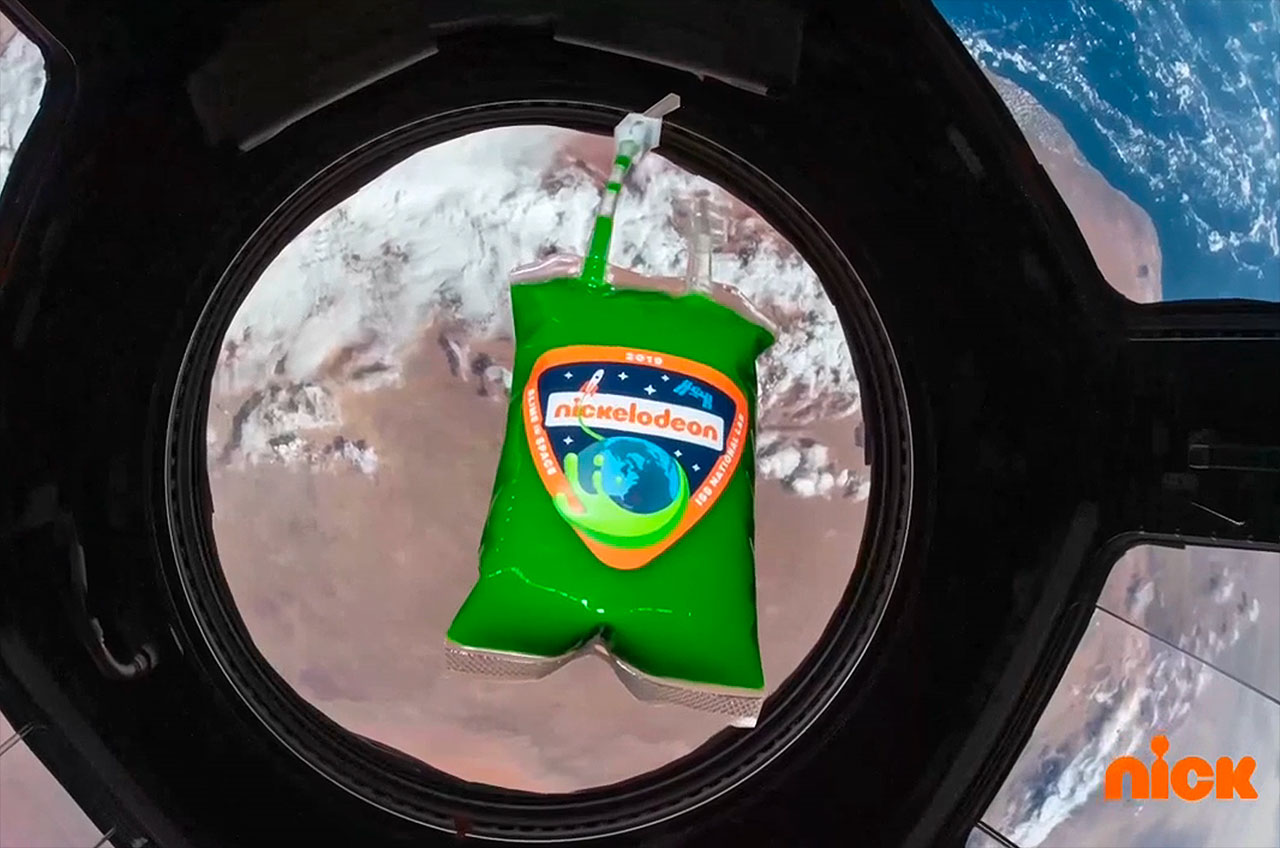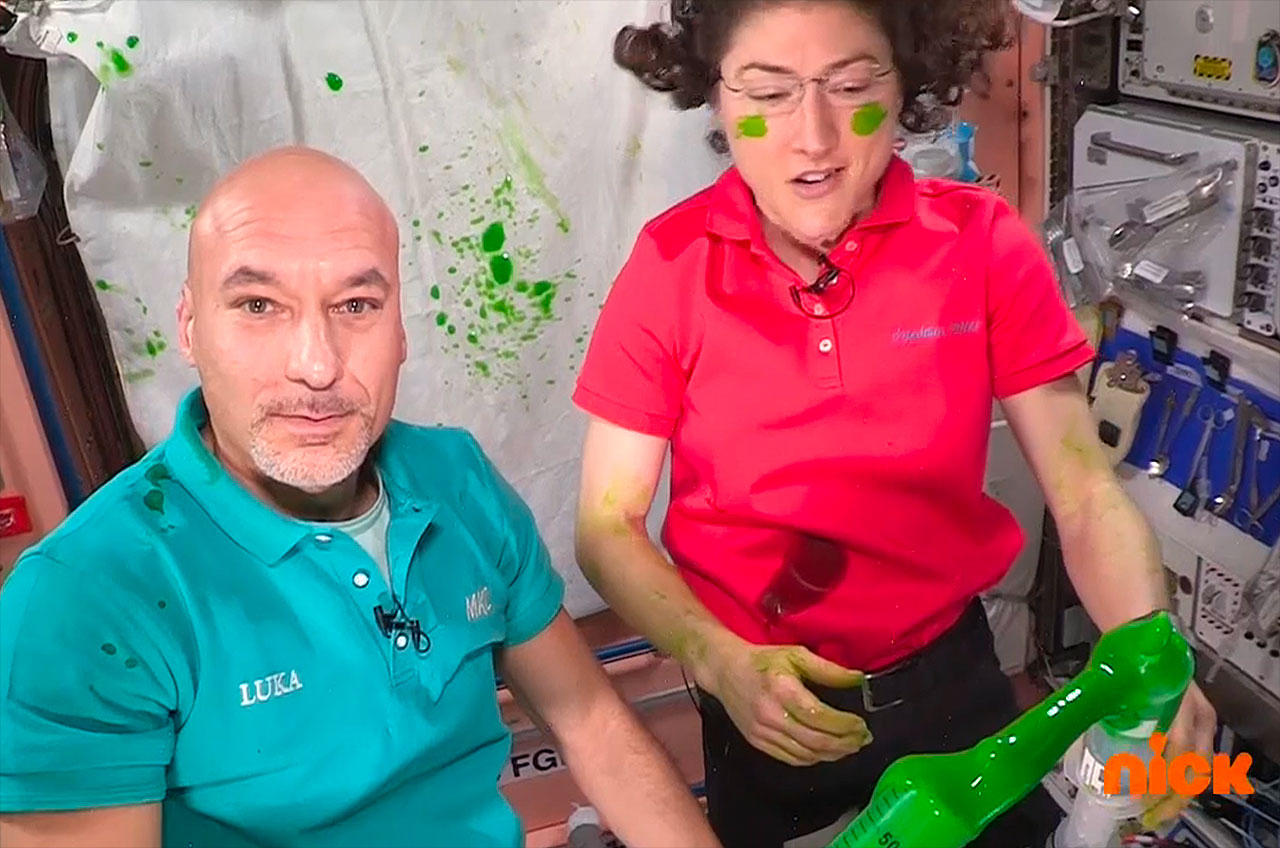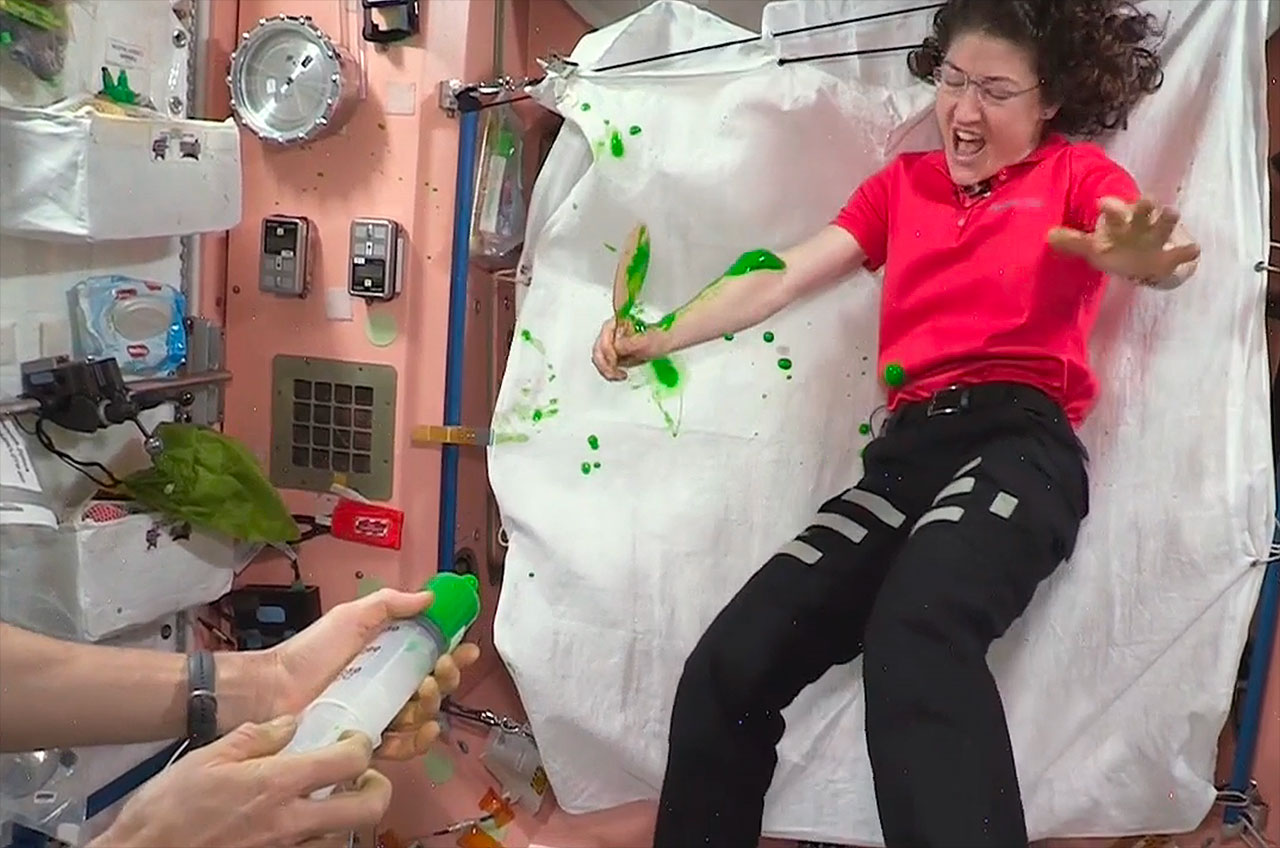Nickelodeon debuts first footage of iconic green slime in space

As it turns out, what "you can't do (that) on television" on Earth, you can do in outer space.
Nickelodeon, the children's cable channel that made green slime its trademark after it was first introduced on the 1980's comedy show "You Can't Do That on Television," used its annual Kids' Choice Awards broadcast on Saturday (May 2) to premiere the first footage of its brightly-hued goo floating in microgravity.
"We sent slime into outer space and yes, it was out of this world," said Victoria Justice, the award show's host and former Nickelodeon star. "I can't wait to see what happens when astronauts let slime loose in zero gravity!"
Related: It's 'Slime Time'! Nickelodeon's green slime is launching into space
if they ever need volunteers to bring more slime into space, we're available 💚 #KCA2020 #NationalAstronomyDay pic.twitter.com/SQc4J1M1XFMay 3, 2020
"The International Space Station is the only place where you can do this, so don't try this at home — or if you try, expect something very, very different," said European Space Agency (ESA) astronaut Luca Parmitano as part of the slime demonstration.
Slime in space
While the public got its first look at the slime in space on Saturday, the footage was filmed in September 2019, while Parmitano and NASA astronaut Christina Koch were still aboard the space station (the two returned to Earth in February).
Organized by the International Space Station (ISS) U.S. National Laboratory, the Slime in Space, or "Non-Newtonian Fluids in Microgravity," project was aimed at creating educational videos and other content to promote science, technology, engineering, and mathematics (STEM) concepts to Nickelodeon's target audience, elementary and middle school students.
Get the Space.com Newsletter
Breaking space news, the latest updates on rocket launches, skywatching events and more!
"Slime is a non-Newtonian fluid, a material in which its viscosity (resistance to flow) changes based on the amount of shear stress applied to it — for example, through squeezing or stirring," explained the Center for the Advancement of Science in Space (CASIS), the non-profit organization that manages the National Lab for NASA.

Packaged in its own specially-labeled "Slime Bag," the green fluid launched aboard a SpaceX Dragon cargo spacecraft with other science experiments and supplies for the space station's Expedition 61 crew in July 2019.
"Houston, we have a slime blob"
"Today, we're going to be working some really crazy science with slime in space," said Parmitano, introducing what he and Koch were about to do on camera. "We want to see and study how this strange concoction behaves in orbit."
"Boom!" Koch proclaimed, as she squeezed the slime out of its bag through a straw to float free. "Houston, we have a slime blob."

As shown during the Kids' Choice Awards' segment, Parmitano and Koch were able to start the slime spinning in mid-air and to adhere to a paddle board, the latter demonstrating surface tension. The two also filled a balloon with the material and then popped it with a safety pin to watch what happened and they ejected the slime from a large syringe.
Of course, what Nickelodeon's slime is most famous for is pouring atop people, including celebrities attending the annual Kids' Choice Awards. While the lack of a gravitational pull prevented the astronauts from spilling the slime over each others' heads, it did not mean they went unsplattered.
"Ahh! I'm slimed!" yelled Koch while laughing, as Parmitano sprayed the gooey green substance on her arm and across her shirt. (The astronauts erected a large cloth over a nearby hatchway to catch any wayward slime from going elsewhere aboard the station.)

"Playing with slime in space is way more fun than I thought it would be — and way more unpredictable," said Koch. "Just like all of the other science we do, you cannot replicate these experiments on the Earth, you need zero gravity to see some of this behavior."
Since the early days of human spaceflight, astronauts have reported delight while observing the behavior of liquids in microgravity, from water blobs to quickly-decarbonated soda balls. It has not been all for fun, though, as past experiments have helped improve the design of fuel tanks and microfluidic devices for medical applications.
In addition to filming the slime experiment for Nickelodeon using traditional video cameras, the demonstration was also captured using a virtual reality (VR) 360-degree camera as part of "The ISS Experience" being produced by Felix & Paul Studios and TIME Magazine. That immersive footage, and additional content from Nickelodeon's digital platforms, have yet to be released.
- International Space Station: Facts, history & tracking
- Fun in zero-G: Weightless photos from Earth and space
- Slime mold models help astronomers map filaments of the cosmic web
Follow collectSPACE.com on Facebook and on Twitter at @collectSPACE. Copyright 2020 collectSPACE.com. All rights reserved.
OFFER: Save 45% on 'All About Space' 'How it Works' and 'All About History'!
For a limited time, you can take out a digital subscription to any of our best-selling science magazines for just $2.38 per month, or 45% off the standard price for the first three months.
Join our Space Forums to keep talking space on the latest missions, night sky and more! And if you have a news tip, correction or comment, let us know at: community@space.com.

Robert Pearlman is a space historian, journalist and the founder and editor of collectSPACE.com, a daily news publication and community devoted to space history with a particular focus on how and where space exploration intersects with pop culture. Pearlman is also a contributing writer for Space.com and co-author of "Space Stations: The Art, Science, and Reality of Working in Space” published by Smithsonian Books in 2018.In 2009, he was inducted into the U.S. Space Camp Hall of Fame in Huntsville, Alabama. In 2021, he was honored by the American Astronautical Society with the Ordway Award for Sustained Excellence in Spaceflight History. In 2023, the National Space Club Florida Committee recognized Pearlman with the Kolcum News and Communications Award for excellence in telling the space story along the Space Coast and throughout the world.











